
CHAPTER 2
pHabulous
Have you ever been swept away by a toxic lover who sucked you dry? I have. Bad men used to light me up like a Christmas tree. If I had a choice between the rebel without a cause and a nice guy in a sweater and outdoorsy shoes, you can imagine who got my phone number.
Rebels and rogues are smooth (and somewhat untamed); they know the headwaiters at the best steak houses, ride fast European motorcycles, and start bar fights in your honor. In short, the rebel makes you feel really alive! It’s all fun and games until he screws your best friend or embezzles your life’s savings.
You may be asking yourself how my pathetic dating track record relates to your diet. Simple. The acid—alkaline balance, which relates to the chemistry of your body’s fluids and tissues as measured by pH. The rebel/rogue = acid. The nice solid guy = alkaline.
The solid guy gives you energy; he’s reliable and trustworthy. The solid guy calls you back when he says he will. He helps you clean your garage and does yoga with you. He’s even polite to your family no matter how whacked they are, and has the sexual stamina to rock your world.
While the rebel can help you let your hair down, too much rebel will sap your energy. In time, a steady rebellious diet burns you out. But when we’re addicted to bad boys (junk food, fat, sugar, and booze), nice men (veggies and whole grains) seem boring. Give them a chance!
The cells of your body love the Alkaline Solid Guy, too. When your cells are at peace with their surrounding environment, they receive nourishment and release waste with ease. As a result, you experience a beautiful relationship with health. But when you eat, drink, think (and date) crap, your cells and inner environment become polluted.
The secret to super-sexy health is a slightly alkaline pH. It’s that simple and that complex. Simple because the food you eat for optimum health is relatively accessible, inexpensive, and requires little preparation. Complex because we’re all carrying around a lot of psychological food baggage that makes changing ingrained habits challenging.
Know this, sweetheart: Your diet and lifestyle choices will either help or harm your delicate pH balance and your overall health. In this chapter you learn how to groove in the optimum health zone. Grab the reins of alkalinity. Yee haw!
The secret to super-sexy health is a slightly alkaline pH.
pH Scale

PH 101
If you’re like me, you ditched high school chemistry in favor of flirting and bumming cigs (acidic). Luckily, I went back to the books to learn what I missed. The pH of a substance tells you how acid or alkaline (basic) it is. pH is measured on a scale from 0 to 14. If something’s neutral, it has a pH of 7.0. Above 7.0, it’s alkaline; below 7.0, it’s acidic. The higher above 7.0, the more alkaline it is and therefore the more oxygen it has; the farther below 7.0, the more acidic it is and the less oxygen it has.
Technically, pH stands for “potential of hydrogen.” It is the measurement of hydrogen ions in a particular solution. The more ions, the more acidic the solution, and vice versa.
Okay, so why is this so important? Your brilliant body is designed to operate within a very narrow pH range. Optimally, you want to be a little on the alkaline side, with a blood pH of around 7.365. Blood is the most important, and therefore most protected, pH measurement. Even a minor fluctuation in your blood’s pH (either too alkaline or too acidic) creates distress signals. Symptoms generally start out small and then ramp up as the imbalance continues.

Everything from a runny nose to skin eruptions, heartburn, eczema, inflammation, arthritis, poor circulation, chronic fatigue, irritable bowel syndrome, a weakened immune system—even cancer—can be traced back in some way to an acidic inner terrain. In fact, a blood pH lower than 7.0 is extremely dangerous. Oxygen levels decrease, and cellular metabolism comes to a screeching halt. Guess what that means? Casket time!
It’s much easier to become too acidic than too alkaline. Your body regularly deals with naturally occurring acids that are the by-products of respiration, metabolism, cellular breakdown, and exercise. But when our acidic diets and lifestyles add to the load, our bodies get overwhelmed. You can meet your amazing God pod halfway by shifting your pH balance toward the alkaline side. By simply eating a more alkaline diet—veggies, greens, fresh organic green juices and smoothies, sprouts, wheatgrass juice, certain grains, and other fabulous plant foods—you will explode with vibrant energy and well-being.
An acidic condition is also a breeding ground for bad bacteria, yeast, and fungi, while an alkaline environment helps keep these critters in check. We assume that colds and viruses happen when we “catch” a bug. In fact, many common infections are actually caused by bacteria that are part of the normal flora already present in our systems. When our diet and lifestyle choices suck, we create a fertile ground for them to multiply and revolt on the inside.
But it’s not just diet that affects your pH. Lack of exercise, anger, drugs, cigs, and stress can all make you acidic. Stress is not a laughing matter or a badge of courage. The work-hard, play-hard, dealwith-it-later approach is a big pH no-no. Emotional stress releases acid-forming hormones such as cortisol and adrenaline that flood your system and muck up your soil. Plus, stress gives you wrinkles! When you’re sixty you’ll wish you had fixed that shit. Do the DIY now instead. Dump the doughnuts and chaos and watch the clock reverse.
PEE IS FOR PH
pH ranges, vary slightly throughout your body. Your blood needs to be slightly alkaline for optimum health; so do your tissues. Your bowels, skin, and (for women) vagina should be slightly acidic—this helps keep unfriendly bacteria away. Your stomach is the most acidic environment in your body (with a pH that ranges from 1.6 to 2.4) due to the hydrochloric acid used to fight foreign invaders and break down foods, especially protein. Your saliva fluctuates the most but still should be slightly alkaline.
The simplest and most accurate way to read your pH is to test your urine—the most reliable bodily substance—with litmus paper strips, available online for about $10. They’re similar to strips used to test chlorinated swimming pool water, so that you can do the backstroke without getting algae in your bikini. The litmus paper changes color when it’s exposed to an acid or alkaline substance. The greater the color change, the more acid or alkaline the substance.
To test your urine, most manufacturers will tell you to simply hold the strip in the flow for a second or two and wait about ten seconds. Easy! Then just compare the color on the strip to the pH chart on or with the package. For optimum sparkle, your urine should fall in the 6.8 to 7.5 pH range. Keep in mind that the pH of urine varies, depending on what you eat and when. To get the best reading, blow off testing your first morning pee. Due to metabolic processes from the night before, it will generally be on the acidic side. If your first pee isn’t acidic, it doesn’t always mean you’re in the zone. Quite the contrary, it could mean that you’re not releasing acids the way you should. To get a more accurate reading, the best time to test your pH is on your second pee of the day and before meals or at least one to two hours after eating.
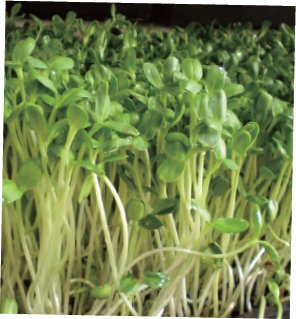
One reading of a test strip won’t really tell you much, because levels fluctuate. It’s best to track your readings a few times a day for a week or so to get a general idea of where you fall. Record your findings in a journal so that you can track your success. A few weeks of this will give you a pretty good snapshot of your body chemistry. As you transition to a more alkaline diet, you’ll definitely see improvements. After a while you won’t even need to test. You’ll know exactly what will happen when you scarf hot wings and guzzle coffee.
It’s important to keep in mind that pH operates on a logarithmic scale, meaning each increase of a single number in either direction away from 7 (neutral) is actually a multiple of ten. So when you move from 7 to 6 on the pH scale, that’s ten times more acid; 7 to 5 is a hundred times more acidic; and so on. Coffee, for example, has a pH of around 4. Soda is a 2. Can you see why the SAD diet takes its toll? It’s much easier on your bod to stay in an alkaline range than to try to restore it. In the blood it takes twenty times the amount of alkalinity to neutralize an acid. Sheesh, is it really worth that cup of Joe?
A few years ago I was teaching my husband about testing his pH and trying to encourage (force) him to eat more alkaline, raw foods and dump animal products completely. At the time, I was in my bash-people-over-the-head mode—and there is absolutely no worse way to approach the man I married. Several hours after he’d finished a burger, fries, and brews at our local joint, I asked him to test his urine. It was an 8, which is über-alkaline!
Naturally, I was shocked and began questioning all that I had learned. Then I hit the books to find out what was really going on. Animal products, fried foods, and alcohol are all highly acidic. In response, his cute bod was pillaging his mineral reserves. He was too alkaline because he had previously been too acidic—his body was overcompensating. Get it? A reading like this is a false positive. Once you understand the basics, you’ll know when your body is truly in the zone.
ROBBING PETER
TO PAY PAUL
Ever hear the expression Something’s got to give? Well, that something is gorgeous you! Your loyal and dedicated body will do anything it needs to do in order to keep you alive. It doesn’t just “find” balance; it works dang hard to create it. If you’ve ever had a high fever, then you’ve experienced the desperation your body undergoes as it scrambles to regain control. A temperature of 98.6 degrees F is healthy, but 105—get your ass to the emergency room! On paper this doesn’t seem like such a big number jump, but boy do those additional digits wreak havoc. Nausea, vomiting, chills, headaches, pain—these are just some of the symptoms felt as your body works to regulate your system.
Now imagine a similar cascade constantly taking place as your body tries to maintain proper pH. The Standard American Diet makes it very difficult to maintain a balanced pH. You eat the fiberless fried tushie with a side of coagulated mucus-creating moo juice (cheese), wash it down with a caffeine/booze fest, followed by a hunk of pancreas-smacking Sugar Snaps. You might love it going down, but your poor God pod is left to deal with the cleanup. One of the ways your body regains balance is by robbing from your precious mineral and enzyme reserves.
MINERALS AND pH
Your body needs super-sexy minerals in order to function properly. Since you can’t make them, you gotta get minerals from your chow (preferably organic). In addition to the main minerals like calcium, magnesium, iron, potassium, and sodium, you need trace amounts of manganese, selenium, zinc, iodine, chromium, and copper. Your body uses these minerals to make proteins, enzymes, hormones, neurotransmitters, and everything else needed to tango.
So how do minerals affect pH? Foods rich in alkaline minerals, such as calcium, magnesium, and potassium, create alkalinity in the body, while foods containing acidic minerals, such as phosphorus and sulfur, lower the pH. A healthy diet stocks your body with plenty of alkaline minerals, while an overly acidic diet eventually maxes out the reserves. This forces your body to pull its own minerals to neutralize acids in order to keep your blood pH on the alkaline side.

One of the ways it does this is by mining alkaline minerals from your bones, teeth, tissues, and organs. When an alkaline and an acidic element hook up, they form a neutral salt. This salt no longer influences your pH (wow, chemistry is so titillating!). Think of this fabulous buffer system as your emergency stash of inner Tums. It’s okay to use them occasionally, but not as a daily crutch. And if you don’t replace your inner Tums with minerals from your chow, then the cabinet will be empty the next time you need it!
The major consequence of losing minerals from the body, especially teeth and bones, is osteoporosis and loss of bone density. One way that loss occurs—ironically—is by drinking too much milk. A high-protein, animal-based diet is extremely acidic. To compensate for that overload of acid, your body mines calcium from your bones and teeth to neutralize the acids created by the loads of milk you swill.
When the acid overload gets too high for your blood, your body dumps the acid out of your bloodstream and into your tissues. Next, your lymphatic system (the cleaning ladies of the body) tries to neutralize the acid and get rid of the waste. But the only way it can do that is to dump the acids back into your bloodstream. Can you spot the destructive cycle a mile away? And if your lymph system is already stuffed with acids, they start to build up in the tissues as well.
ENZYMES:
THE SEXY SPARK OF LIFE
Up to 95 percent of your body’s activity is dependent on minerals, and one of their most important tasks is to help produce enzymes. Enzymes are little protein catalysts that ignite a gazillion complex and specific chemical reactions in the cells of every living plant or animal. There are thousands of different enzymes in your body, and they help with everything from digesting dinner to brain function to healing and detoxification. They’re like the ultimate BFF, if you ask me.
You make two main types of enzymes: digestive and metabolic. Digestive enzymes break your food down into simpler, smaller bits that are easier for your body to absorb. The second you put grub in your mouth, digestion begins. It’s a lovely step-by-step process involving your saliva, stomach, duodenum, pancreas, and small intestine.
Each of these fantastic organs secretes different enzymes at various stages along the way. Amylase in your saliva breaks down starch into sugar. In your stomach, enzymes like pepsin break down proteins. Lipase, an enzyme made in your pancreas and released into your small intestine, breaks down fats. If you lack adequate enzyme levels at any stage, food slips by and indigestion occurs. Add overeating and constant between-meal snacking and your body will have a hard time keeping up.
Here’s another important factoid: Enzymes are both pH- and heat-sensitive. Cooking food above 118 degrees destroys enzymes. This doesn’t mean that you can’t eat cooked foods; it means that you shouldn’t exclusively eat cooked foods. Highly refined and processed foods suck the most; they’re completely devoid of enzymes (pasteurized stuff, too). Consequently, your body needs to make more digestive enzymes to get the job done.
But there’s only so much energy to go around, so the more time your body spends making digestive enzymes, the less time it has to create metabolic enzymes. What are they? Metabolic enzymes basically run your body. They make every biochemical reaction in your 100 trillion cells possible. Metabolic enzymes build blood, tissues, and organs; repair your beautiful body; and help your cells produce energy and carry away waste. Obviously, these righteous little dudes are really important.
FOOD ENZYMES
There’s one more important enzyme group to mention: food enzymes. For optimum health, we need to get additional enzymes from our food—especially as we age, because our bodies slow down enzyme production. Dang! Luckily, plant foods can supply the backup enzymes needed to keep us smart and sassy. Your body is a bank account, and food enzymes are the currency. Imagine making deposits instead of constant withdrawals. The more deposits you make, the more equity and interest you build.
By eating a vegetarian or vegan diet, with an emphasis on raw and living foods—which are loaded with their own enzymes—you give your body a break from the wear and tear of dining on too much cooked and acidic foods. The research of Dr. Edward Howell (often referred to as the father of enzymes) says, “Living organisms will secrete no more enzymes than are needed for digestion of a particular food.” So when the foods you eat come to the party with the right amount of food enzymes, they don’t drain the host. Instead, the enzymes in the food itself help the digestive process; as a result, you use less of your own digestive enzymes.

Tom Grundy
If you’re a curious dot connector, you may be wondering how pH-sensitive enzymes survive the tummy and its hydrochloric acid. This stumped me for years. Finally I came across a few respected sources that cleared this question up, including Dr. Gabriel Cousens, author of Conscious Eating. He offers evidence that there are actually two different sections of the stomach, the upper (cardiac section) and the lower (pyloric section). The upper section has a pH of about 5 to 6, which is important because food enzymes are still active in this range. Good news—grub stays in the upper section for up to sixty minutes, where food enzymes and enzymes from your saliva go to town. Once they hit the lower, more acidic section of the stomach, hydrochloric acid and pepsins take charge, especially on proteins, and food enzymes are only temporarily inactivated. Where does your chow go next? The alkaline small intestine—where food enzymes become active again in order to complete their work. Food enzymes have another wonderful purpose: They allow your pancreas to take a break from secreting digestive enzymes. When this happens, your good old pancreas releases more metabolic enzymes for detoxification, renewal, repair, and general overall maintenance.
For all you pet lovers out there, food enzymes are an important thing to consider. Ever wonder why animals in the wild don’t get the same chronic (human) diseases as our domesticated pets experience? The answer may lie in the power of enzymes. When animals are fed cooked, processed foods (sometimes filled with dangerous poisons from China), their bodies break down and they get sick.
In the early 1930s Dr. Francis Pottenger began a ten-year study involving more than 900 cats. He broke the cats into two groups. The first group was fed raw meat and raw (unpasteurized) milk. The second group was fed cooked meat and pasteurized milk. The cats on the raw diet remained disease-free and thrived. Over time, the cats on a 100 percent cooked food diet developed degenerative diseases, reproductive issues, and other health problems. Viva raw foods and enzymes for me, you, and Scooby-Doo.
THE POWER
OF RAW AND LIVING FOODS
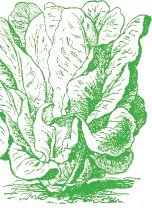
As you’ve probably guessed by now, whole and unprocessed raw and living foods add a huge amount of plant-based currency to your account. These foods are the fountain of youth. Leafy greens, wheatgrass, veggies, sprouts, certain fruits, nuts and seeds, grains, seaweeds, green juices, and smoothies flood our bodies with chlorophyll, enzymes, vitamins, minerals, phytonutrients, fiber, and oxygen. Happy, healthy cells love oxygen. They thrive on an alkaline, oxygen-rich, plant-based diet. Unhealthy cells (like cancer cells) or viruses, bacteria and other nasty microorganisms hate oxygen. They prefer an acidic diet high in animal products, processed and refined foods, and synthetic chemicals.
Ever hear of Dr. Otto Warburg? Well, he’s sexy! And even though Warburg’s been dead for decades, I still have a crush on him. In 1931 he won the Nobel Prize for his pivotal studies on the metabolism of cancer cells. His key revelation was that “Cancer has only one prime cause. It is the replacement of normal oxygen respiration of the body’s cells by an anaerobic (oxygen deficient) cell respiration.” In layman’s terms, cancer cells are anaerobic, they thrive in an oxygen-depleted environment. Conversely, they cannot live in the oxygen-rich environment enjoyed by normal cells.
When we eat a plant-based diet, with an emphasis on raw foods, we assist our bodies in maintaining an alkaline (aerobic) environment. The more oxygen we get in our food, the more health we experience. Excessively acidic food creates an unhealthy cellular environment, which increases the chance of mutations. Raw and living foods (foods that are still growing, like sprouts) are the most alkaline, oxygenrich foods we can eat. They’re my prescription for optimum health. Because they haven’t been cooked, they still contain their life force. The fabulous fiber in raw food (or any fiber-rich food) also acts like an intestinal scrub brush, sweeping away debris. This allows your tubes to remain clear and ready to absorb nutrients from other healthy food. Your body loves all this life force, and so does your immune system!
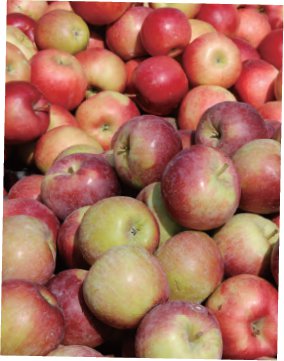
In fact, your precious cells are like little batteries that run on energy provided the sun, either directly or indirectly. Directly: You eat the plant that grew in the sun that contains lots of vitamins, minerals, carbs, fat, and enzymes. Indirectly: You eat the vegetarian animal that ate the plant that grew in the sun and contains vitamins, minerals, carbs, fat, and enzymes. PS: Direct is best.
THE RAW
LIVING REMEDY with

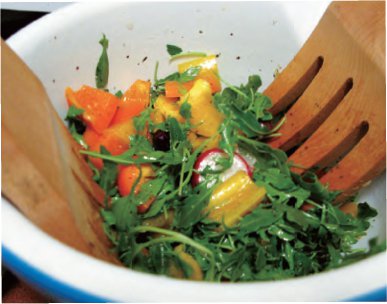
Alysia Cotter Photography
Dr. Brian Clement, PhD, NMD, LN, and director of the Hippocrates Health Institute, is the author of several books, including Living Foods for Optimum Health.
CHLOROPHYLL:
LIQUID SUNSHINE
At the top of our supercharged alkaline health list is king chlorophyll. Think about it: Chlorophyll is what allows plants to absorb light from the sun and convert it into usable energy. Our very existence depends on the sun. We are interconnected to its energy on many levels, including what we shove in our mouths.
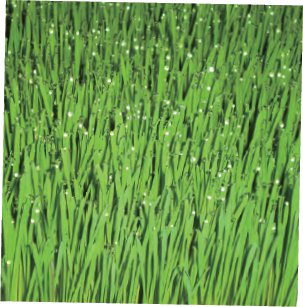
The chlorophyll in plants is what makes their leaves green and healthy. You can think of it as the blood of the plant—and in fact, it’s similar to our blood. The difference is that the main atom in hemoglobin, the chemical that transports oxygen in your blood, is iron, while in chlorophyll it’s magnesium.
Chlorophyll is a powerful blood builder. That’s right, the blood of the plant literally helps heal and detoxify the blood of the body. It increases red blood cell production and enhances the cells’ ability to carry oxygen. Chlorophyll strengthens the immune system, improves circulation, eases inflammation, and counteracts harmful free radicals. Foods especially high in chlorophyll are green (duh!), but if spinach is the only green food coming to mind, other concentrated sources are asparagus, green bell peppers, broccoli, green olives, kale, leeks, and turnip greens. By eating a diet high in chlorophyll, we dine on liquid oxygen, also known as sunlight—the very substance we need to stay alive and thrive.
 TIP
TIP
While eating raw fruits and veggies is optimal, quickly steaming, lightly sautéeing, or blanching food is the next best option, especially if you keep the inside of the plant crisp. For those with weak digestive systems, increasing your raw food consumption too fast can be ouchy on the belly. It’s like expecting a couch potato to run a triathlon. Steaming and blanching helps break down the fibrous plant walls. As you heal your body, you’ll be able to up the ante (and lower the heat).
FIGHT BACK A GAIN ST
FREE RADICALS
Excess acid-forming foods put an enormous strain on the digestive system, liver, and kidneys. Neutralizing all that acid also creates extra molecules called free radicals, which damage our cells and rob electrons (life force) from healthy tissue. It’s impossible to completely protect ourselves from free radicals (and we wouldn’t want to). Some naturally form during normal metabolic function or as an immune response to stamp out bacteria and viruses. But too many free rads (from a shitty diet, carcinogens, environmental toxins, stress, etc.) up the ante on disease and premature aging.
What makes these molecules so dangerous? Basically, free radicals are molecules that have lost one of their electrons, and this makes them very unstable. Sort of how you feel when you can only find one of your Jimmy Choos. A free radical will latch onto any electron it can find. When these mini thieves steal an electron, that molecule in turn becomes a free radical, starting a cascade of them that can damage your cells. Take it from me—you can’t trust too many free radicals. They talk a good game but they’re moochers!
Your resourceful body produces antioxidant enzymes designed to quench the free radicals. This works because antioxidants are the givers. These generous little substances donate an extra electron to the greedy free radical. This stabilizes the little mutant and keeps it from bombarding other cells and snatching electrons from them. But if you have too many free radicals your body can’t keep up. Downward health spiral, here you come!
One way to combat free radicals is to suck in less of the stuff that causes them in the first place. Another way is to give your body plenty of additional antioxidants found in (you guessed it) mostly raw, plant foods.
VITAMINS
Do you know why vitamins and minerals are always mentioned together? Well, like Bogie and Bacall, they’re made for each other and need each other to be happy. A vitamin is an organic (carboncontaining) chemical compound that your body needs for normal functioning. Because your body can’t make vitamins, you must get them from your food. There are thirteen vitamins in all, and you need tiny amounts of every one of them for good health.
Though vitamins are added to a lot of “fortified” foods, like breakfast cereal, bread, and OJ, it’s not the same as consuming them in their natural form. Talk about backward: Manufacturers attempt to reinject the nutrients they’ve processed out of natural foods, or add them to fake foods that never contained them in the first place. Synthetic laboratory vitamins are no match for the real deal. In some foods, vitamins and minerals are literally sprayed on! How dumb.
When you cook foods, you also reduce the vitamin and mineral value. You know those intoxicating stovetop smells? Well, suck them in, ’cause there goes a good portion of your vitamins and minerals. If you kill your broccoli, much of the vitamin C will end up in the cooking water, not in you.
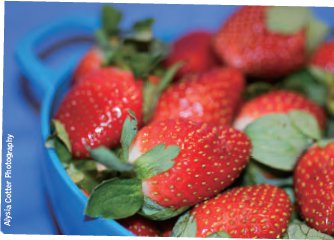
PHYTONUTRIENTS
Phytonutrients, are like Secret Service agents that protect and fight off diseases in plants. Therefore, when you eat phytonutrient-packed plants, those little kickboxers help you fight free radicals and disease, too. Phytonutrients give plants their characteristic colors and flavors. Because they have at least one extra electron, phytonutrients are the ultimate givers. There are literally thousands of phytonutrients. But like enzymes, they are also heat-sensitive and are best eaten raw. Some researchers have found that cooking may help release certain antioxidants like beta-carotene and lycopene from plants’ cells. But when you factor in the importance of retaining raw foods’ powerful enzymes (and consider that they still contain buttkicking levels of beta-carotene and lycopene in their raw form), it’s still ideal to consume a mostly raw diet. Keep it real, keep it raw! Folks who get lots of phytonutrients in their diet tend to live longer, healthier lives.
Here’s just a few of my fave phytos:
• BETA-CAROTENE. Found in orange-colored foods such carrots, sweet potatoes, and winter squash, beta-carotene is converted in your body into vitamin A. It’s also found in dark green leafy vegetables, but the orange hue is hidden by our good friend chlorophyll.
• LYCOPENE. Found in tomatoes, watermelon, pink grapefruit, and some other foods, lycopene may help prevent prostate cancer.
• LUTEIN AND ZEAXANTHIN. Found in orange, red, and yellow foods such as corn, these phytonutrients help protect your eyes against age-related macular degeneration, the leading cause of blindness in older adults.
• RESVERATROL. Found in white, blue, and purple foods such as garlic, blueberries, grapes, and red wine, resveratrol is being studied for its life-extension possibilities. (Don’t get too excited and run to the liquor store, sassy. Wine is still acidic, though it’s a better choice than Red Bull and vodka!)
• QUERCETIN. Found in apples and onions, this may help prevent heart disease.
NOT ALL ACIDIC FOODS
ARE CREATED EQUAL
The problem isn’t that we’re eating acidic foods; the problem is that we are eating more acidic foods than alkaline foods. In the Standard American Diet, the typical ratio of acidic to alkaline foods is about 80/20—that is, 80 percent of the diet is acidic foods, while only 20 percent comes from alkaline foods like fresh raw vegetables. And we wonder why we have such a huge health crisis in our country?
We need to flip the ratio. Ideally, you want to have between 60 to 80 percent of your foods coming from the alkaline side—and only 20 to 40 percent coming from the acidic. But keep in mind that not all acidic foods are created equal. In fact, we need some acidic foods in order to get proper nutrition. For example, some nuts, grains, and beans are slightly acidic, but they’re also protein powerhouses. Regularly including these gems in your diet is really important.
In his book The Acid–Alkaline Diet for Optimum Health, naturopath Christopher Vasey explains that the acids in plant foods are often referred to as weak acids. These acids include oxalic, pyruvic, citric, and acetylsalicylic. Animal proteins are called strong acids. These acids include, uric, sulfuric, and phosphoric. Neutralizing strong acids takes tons of energy and stresses your liver and kidneys. Since your kidneys can only eliminate a fixed amount of strong acids per day, the rest of the stuff is stored in your tissues. On the other hand, weak acids are easy-breezy to eliminate.
As Vasey suggests, there are no limits on the amount of weak acids that can be removed from your body by your cute kidneys. So as you can see, there is a huge difference between (slightly acidic) brown rice and (highly acidic) steak!
Even if you occasionally include a small amount of animal products in your diet, you’ll be in much better shape than if you continue to stuff your face with them two or three times every day. No matter what pill, potion, surgery, or treatment our doctors come up with, if we don’t participate in keeping our pH in balance, science and technology will forever remain a Band-Aid.

Remember, this is a direction, not a rigid absolute. Even though I have an exceptionally healthy diet, I still dip my vegan cupcake in a glass of champagne from time to time. The question is, how often? Regular bad habits deplete our core energy. Occasional compromises and tiny indulgences remind us that we’re human. As long as the majority of the time you are giving your body what it needs (remember the bank account analogy), then the minor detours—when appropriate—actually help keep us on track. For a list of additional reading and wisdom feast your eyes on the crazy sexy resources in the back of the book.
A PEEK AT THE
TOP ALKALINE FOODS
Here’s a cheat sheet of yummy alky food and drink—have your fill!
Alkaline water.
Almonds, brazil nuts, sesame seeds, and flaxseeds.
Avocados.
Cold-pressed oils such as hemp, flax, and borage seed.
Moderate amounts of grains such as quinoa, wild rice, millet, amaranth, buckwheat. Exceptions: wheat, oats, and brown rice are mildly acidic.
Grasses, especially superpowered nutrientpacked wheatgrass.
Green drinks.
Green veggies—all kinds, but especially leafy green veggies such as kale, spinach, lettuces, collards, mustard greens, turnip greens, cabbage, and endive.
Lemons, limes, and grapefruits—although these fruits are acidic, they actually have an alkalizing affect in your body.
Lentils and other beans—in general, all legumes (beans and peas) are alkalizing.
Miso.
Oil-cured olives.
Raw tomatoes—but cooked tomatoes are acidic.
Root veggies, such as sweet potatoes, potatoes, turnips, jicama, daikon, and burdock.
Seaweed.
Sprouts!
Stevia (a sweetener).
THE ACIDIC RUNDOWN
Here’s a list of some of the offenders on the 40/20 part of the CSD. Consuming them in moderation, limiting them to occasional indulgences, or eliminating them entirely is recommended.
Alcohol.
Animal protein: red meat, poultry, fish, eggs, milk, cheese, dairy products (these products are highly acidic).
Chemicals, drugs, cigs, heavy metals, pesticides, preservatives.
Coffee (even decaf), black tea.
Heavily processed foods, no matter what they are made of.
Honey, corn syrup, brown sugar, fructose.
Ketchup, mayonnaise, mustard (use sparingly).
Some legumes like chickpeas, black beans, and soybeans are slightly acidic but are valuable staples of a healthy diet.
Processed soy products tend to fall on the acidic side—enjoy them in moderation.
MSG.
Processed oils such as margarine, fake fats, trans fats, and refined vegetable oils.
Refined grains, wheat, and oats: White bread, pasta, and rice are highly acidic.
Soda, energy drinks, sport drinks.
Table salt (sea salt and kosher salt are better choices in moderation).
All salted and roasted nuts.
White sugar and sugar substitutes.
Yeast and vinegar (with the exception of raw apple cider vinegar).
Soy sauce (use sparingly and choose lowsodium tamari or gluten-free nama shoyu).
CHOOSING
ALKALINE FOODS
How do we know if a food is alkaline or acid, and by how much? The most common method is to incinerate a sample of the food and analyze the mineral content of the ash. Not something you can do with a chemistry set from Toys “R” Us. At any rate, if the ash is high in alkaline minerals, the food will probably have an alkalizing effect. That’s the theory, anyway. Because lab results and experts often disagree, the many books and Web sites that give alkaline and acidic food charts also disagree. Usually the disagreement is minor. In some cases, though, it’s much bigger.
What I’ve done for this book is review all the reputable food pH sources I could find. I then applied my nutritional training to help me decide which sources were on the right track. Based on all that, I’ve come up with a mini sample alkaline/acid food list (see p. 35) to give you a basic idea of what foods to enjoy, moderate, or avoid altogether.
Whether a food is mildly alkalizing or mildly acidifying doesn’t really matter very much. There are definitely shades of gray. What’s far more important is for you to have a basic grasp of how all this works in order to make better choices.
 TIP
TIP
Love, laughter, and moderate exercise will help you maintain your acid—alkaline balance. Excessive GI Jane exercise is the opposite—it adds more acid to the body.
TOO-FRUITY!
Most fruits are slightly acidic (with the exception of avocados), because of their high fructose (sugar) content. However, in small quantities, fresh organic in-season fruits including all sorts of berries, apples, pears, grapefruit, and cantaloupe are fantastic. Think of a serving as one small to medium piece of “hand fruit” and l cup of berries or cut-up melon. Avoid canned and fermented fruits, preserves, jams, jellies, and processed or hybridized fruits that have lots of added sugar.
TAKE INVENTORY
So now that you know just enough about acid/alkaline foods and pH to make you dangerous, let’s examine some of our favorite acid baths. Look at your plate, peek in your glass. What direction are you moving in? I don’t know about you, but I used to make crappy meal choices three times a day, every day! Check out what my daily menu used to be (see sidebar):
An acidic menu like this makes you snooze, sneeze, swell up, gain weight, and get sick. These scraps are loaded with saturated fat and processed sugar, and they’re desperately missing our pal fiber. In fact, every single food on this typical diet, with the exception of the broccoli (albeit dead), makes our bodies work triple time to counteract the cascade of chemical reactions coursing through us.
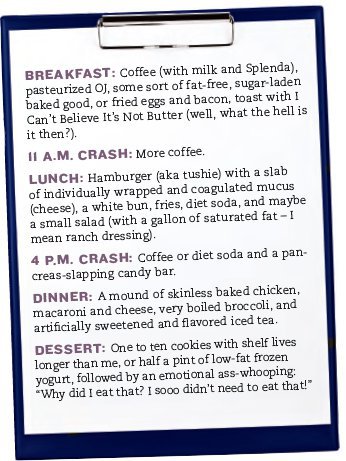
DEBUNKING
THE FAD DIET MYTHS
Now that I understand the importance of pH, I’m totally liberated from neurotic food calculations. Fad diets hold no power over me. When we consider the true measure of health, many popular diets just don’t make sense. I don’t need to know that I’m blood type O in order to shop for the right food for myself, and I certainly don’t need a degree in anthropology. And while I appreciate the benefits of traditional diets, I stop at the emphatic advice to only eat foods from my culture of origin. I’m a Colombian, Irish, and Scottish mutt who respects and understands body chemistry. Empanadas, a slab of soda bread, and haggis (the boiled and minced windpipe, lungs, heart, and liver of a sheep) ain’t gonna make me thrive.
Many nutritionists and wellness counselors advocate moderation without any true understanding of what that actually means. Moderation is not a green light. Moderation is education and conscious decision making. Will your body tell you what it needs? For sure! But will you be able to read the signs if you have no clue what to look for? My body used to tell me to eat two pints of Ben & Jerry’s and flirt with cocaine. You can’t be moderate if you don’t know how to find your center. Once you build a solid home base, you can certainly play, stretch, and expand. But let’s get our health ducks in a row first.
In the beginning of my journey with cancer I turned to a macrobiotic diet. In fact, during the filming of my documentary Crazy Sexy Cancer, macrobiotics was my sun, moon, and stars. The macrobiotic diet is a low-fat, high-fiber, predominantly vegetarian diet that is heavy on grains and soy products. After a while I felt depleted. Although I didn’t realize it at the time, strict macrobiotic eating made me too acidic. This was my first clue that something was wrong.
Though there are many good principles to this way of eating, I was consuming far too much cooked foods and not enough raw, alkaline foods, water, and good oils—each of which I was prohibited from eating on the “healing” plan. I was told, “You’re too yin, your cancer is yin, you can’t eat raw yin foods.” Try and explain that one to your oncologist!
Moving away from the macrobiotic diet was my first experience in “take the best and leave the rest.” It got me off the horrible Standard American Diet way of eating, and for that I will forever be grateful. Plus, macrobiotics taught me how to tolerate seaweed, love kale, make healthy (and delish) soups, de-fart my beans, and use a pressure cooker without having to call 911.
When I did my first green juice fast (with lots of liquid nutrition), everything changed. Almost immediately my circulation came back and my blood work improved. With the addition of good fats, a moderate amount of whole grains, fresh veggies and low-glycemic fruits, my energy levels soared, my weight balanced out, and other chronic issues cleared up. From that day forward I was hooked on juice, adding more raw foods to my diet and recognizing the power of pH. Remember, raw foods isn’t about eating only mangoes and bananas in 10-degree weather and then complaining about feeling drained. Leave that non-sense for the wacky fruitarians. Raw foods, Crazy Sexy style = more blood-sugar-stabilizing greens and less sugar, more chlorophyll and less chaos.
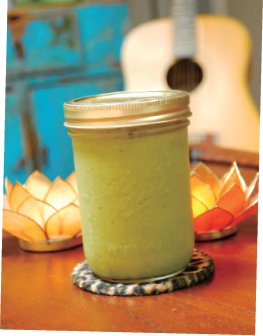
During the 21-Day Cleanse outlined in chapter 10, you will be flooding your body with alkalinity. This is an incredibly important component to the detoxification process, because the acids that have been stored in your tissue in order to protect the blood can finally be eliminated. With this new information, can you see why some of the popular cleanses can only take you so far?
If your body is a temple, then your mouth is the altar. From this day forward, vow to treat yourself like a Divine Being. Health is much simpler and far more scientific than we’re led to believe. Your pH will never lie. That’s why I honor and trust it. In return, it’s given me phenomenal health in the midst of challenging circumstances.
You can’t be moderate if you don’t know how to find your center.
 testimonial: Debbie Y.
testimonial: Debbie Y.
Seven to ten years they gave me. No, not a prison sentence; it was my cancer prognosis. I was diagnosed with chronic lymphocytic leukemia at forty-seven, with a six-year-old daughter. I was to just watch and wait, no cure, no treatment, at least none that offered a longer life. The next six months I was adrift, lost in a sea of fear and hopelessness, searching for a way to heal, to live to see my daughter grow up. I read, I researched, looked for a ray of hope. Then I found Crazy Sexy Cancer Tips. I read it greedily and felt as if I had been airlifted to safety by Kris’s wise words. Watch and wait meant seeing my white cells double in six months, a sign my disease was progressing. But now I had a life raft, a guide to living well and healing. The next five months were full of green juice, dry brushing, meditation, and a low-glycemic raw food diet. Then something magical happened, besides feeling incredible. My white count fell to half of what it was. I will always follow Kris’s lead, for the rest of my long and healthy life.
CHAPTER  IN REVIEW
IN REVIEW
REMEMBER:
 Our bodies are designed to live within a narrow pH range—slightly on the alkaline side. Slip into acidity and a multitude of problems arise.
Our bodies are designed to live within a narrow pH range—slightly on the alkaline side. Slip into acidity and a multitude of problems arise.
 Get curious about your pH—use urine strips to test and monitor it.
Get curious about your pH—use urine strips to test and monitor it.
 Fight free radicals with healthy food enzymes, vitamins, minerals, and phytonutrients from raw, plant-based foods.
Fight free radicals with healthy food enzymes, vitamins, minerals, and phytonutrients from raw, plant-based foods.
 Up your consumption of alkaline food, and reduce the amount of acid food you eat.
Up your consumption of alkaline food, and reduce the amount of acid food you eat.
 Raw foods, Crazy Sexy style = more blood-sugar-stabilizing greens and less sugar, more chlorophyll and less chaos.
Raw foods, Crazy Sexy style = more blood-sugar-stabilizing greens and less sugar, more chlorophyll and less chaos.